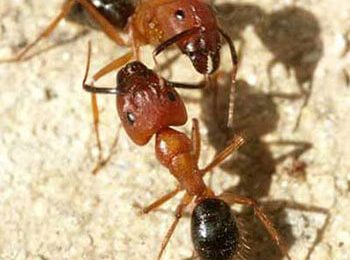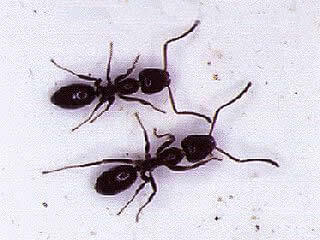Brown Recluse Spider
(Length: 1/4″ – 1/2″) The brown recluse is a brownish spider with a distinctive violin-shaped mark behind its eyes, which has earned it the name “fiddle-backed” spider.

(Length: 1/4″ – 1/2″) The brown recluse is a brownish spider with a distinctive violin-shaped mark behind its eyes, which has earned it the name “fiddle-backed” spider.

The smoky-brown cockroach is uniform in color, typically brownish black and very shiny. They are good flyers and are attracted to lights at night. Found in warm, dark, moist areas such as tree holes, ivies, mulch, woodpiles and soffits or eaves of attics with moisture problems, they are very mobile.

(Length: 1 1/2″ – 1 3/4″) This wingless roach is often called the “Stinking Cockroach” because of the foul smelling fluid it produces to protect it from predators.

(Length: 1/2″- 5/8″) The brown-banded cockroach is easily recognized by alternating light and dark bands across its back. About the same size as the German roach, but not as dependent on moisture, it can be found anywhere in the structure.

(Length: 1/12″ – 1/16″) These small red to yellowish ants can be found trailing anywhere within a structure. They can nest in wall voids, cabinets, boxes of food and any other accessible crevices and spaces.

(Length: 1/4″- 1/2″) These large ants usually nest outdoors in stumps and logs in contact with the soil and in dead tree limbs and cavities. The Florida Carpenter Ant has a black abdomen and red head and thorax.

(Length: 1/4″ – 1/2″) Although the same size as Florida carpenter ants, these ants are completely black instead of two-toned. Unlike the Florida species, the black carpenter ant does more damage to sound, undamaged wood.

Length: (1/11″ -1/10″). These medium sized ants are uniformly brown and trail in large numbers. They compete aggressively with other ant species for food and nesting sites and can drive most other ant species out of their territory. Their nests have large numbers of individuals and a high percentage of queens.